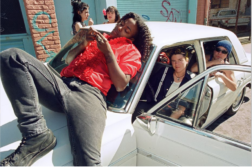HOW DID the gay liberation movement of the 1970s evolve into the “LGBTQ” lineup of letters that we have today, and what are the implications for building a movement out of such divergent sexual and gender minorities? I offer here a thumbnail history of this accretion process from Stonewall to today. A look at some of the combinations that have been proposed in the interest of inclusiveness gives a sense of the endless, and even at times whimsical, manifestations of this process. Each letter corresponds to a particular “identity” or interest group, and this historical process has tracked closely with a shift away from the sexual liberationist goals of the 1970s to the identity politics that has come to dominate the movement.
Letters, We Get Letters…
Following Stonewall, the movement for homosexual rights was called simply “gay liberation”—a founding organization was the Gay Liberation Front—and it included both men and women. Four years later, in 1973, that was still the case when a few former leaders of New York’s Gay Activists Alliance announced that they were forming the National Gay Task Force, which was to be a top-down organization rather than a democratic body. (NGTF subsequently changed to ngltf and is now the National LGBTQ Task Force.)
David Thorstad was president of New York’s Gay Activists Alliance in the mid-1970s and is the coauthor (with John Lauritsen) ofThe Early Homosexual Rights Movement (1864–1935).






